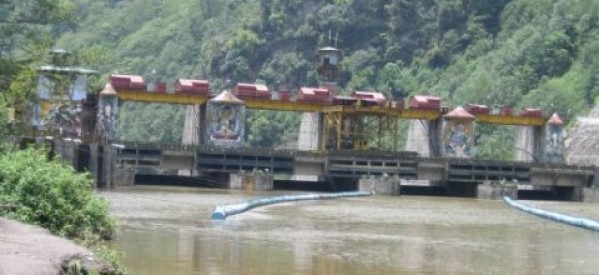India looking for equipment purchase from Bhutan Hydro projects in exchange for concessional finance

India is seeking to persuade Bhutan to give orders for power generating equipment to Bharat Heavy Electricals Ltd (Bhel) for hydropower projects that the Himalayan kingdom is building with concessional finance from its bigger neighbour. India is helping Bhutan build 10,000 megawatts (MW) of hydropower by providing funds at a discounted interest rate as part of its efforts to boost its strategic influence with neighbours. It now wants Bhutan to buy equipment from state-owned Bhel for projects that are estimated to cost some $10 billion.
Bhutan is in favour of awarding contracts based on global competitive bidding. “Why shouldn’t the orders be placed with an Indian government-owned firm when the funding is being provided by the Indian government?” said a person aware of the issue requesting anonymity. The potential order value for Bhel is around $3 billion. India’s move follows China’s Sinohydro Corp. being selected for the 120MW Itezhi-Tezhi hydropower project in Zambia although the Indian government had offered a $50 million credit line to part-fund the project, assuming that the engineering, procurement and construction contract would be awarded to Bhel.
A line of credit is a specified amount a borrower may obtain without special checks at a concessional interest rate of 1.75%. The government has said 75% of the equipment bought through its line of credit must be sourced from India. “There have been innumerable representations that have been made to the various arms of the Indian government, such as the ministry of external affairs through the ministry of heavy industries. This issue has been on for some time,” said a Bhel executive who declined to be named. “For projects developed through Indian assistance, the funding came from India, with part of it as grant which was converted into equity and the balance as soft loan.
The electricity is to be bought by India on a payment basis,” said another person who also spoke on condition of anonymity. “If the Indian government is funding the projects, it’s reasonable to expect sourcing of equipment from a state-owned firm such as Bhel. This is the standard norm.” Bhutan, which is strategically located between India and China, has the potential to generate 30,000MW of hydropower but has a capacity for just 1,490MW. India has been stepping up its energy diplomacy in the neighbourhood while trying to engage countries such as Myanmar, Bangladesh and Sri Lanka to counter growing Chinese influence. Of the 10 projects to be developed with India’s help in Bhutan, Punatsangchhu-I, Punatsangchhu-II and Mangdechhu projects are under construction.
Bhel has been given the orders for the supply of electro-mechanical equipment packages for these. Of the rest, project reports for Kholongchu, Amochhu reservoir, Bunakha reservoir and Wangchu run-of-the-river have been submitted, and feasibility reports are being prepared for Kuri-Gongri, Chamkharchhu-I and Sankosh reservoir projects. “While it was decided that orders for Punatsangchhu I, Punatsangchhu II and Mangdechhu will be placed on Bhel, for the remaining projects the Bhutan government wants to go for global competitive bidding,” the Bhel executive said. “Since this a case of concessional financing, the orders should be placed with an Indian government-owned firm.
During earlier meetings with the Bhutan government, it was decided to go for global tendering. It is for the Indian government to take a view, whenever it is ready for financing the remaining projects.” Around 90% of electricity generated through these projects will be sold to India to meet the country’s growing energy demand. India has a peak power shortage of around 12%. It already has power-grid links with Bhutan, and has helped it develop the Tala, Chukha and Kurichhu projects, which account for around 95% of the power generated by Bhutan.
Bhel had supplied the equipment for all three projects. “Some foreign firms such as Alstom are interested in getting the orders,” said an official at the department of heavy industries who didn’t want to be named. “But we believe since we have an excellent track record in Bhutan as we have delivered more than what was expected of us in previous projects, we should be getting it on a preferential basis.” Questions emailed to the spokespersons for the external affairs ministry and Alstom on 25 January remained unanswered.
There was no response to questions emailed to the Bhutanese embassy in New Delhi on 28 January. “Bhutan is expected to add around 10,000MW of hydropower by 2020, out of which around 3,000 MW has already been ordered,” a Bhel spokesperson said by email. “Bhel is pursuing various agencies for securing orders for the other planned hydropower projects.” “There has been some resistance from Bhutan,” said the heavy industries official. “Now we are planning to put Bhel’s name in the line of credit, which would automatically give the project to Bhel.” While earlier projects such as Tala, Chukha and Kurichhu were developed on the joint inter-governmental development model, the Kholongchu, Amochhu, Bunakha and Wangchu projects are to be developed by state-owned firms such as NHPC Ltd, NTPC Ltd, Tehri Hydro Development Corp. Ltd and SJVN Ltd through joint ventures.






